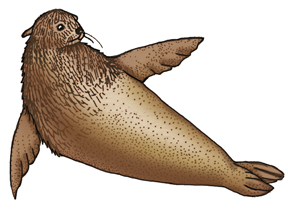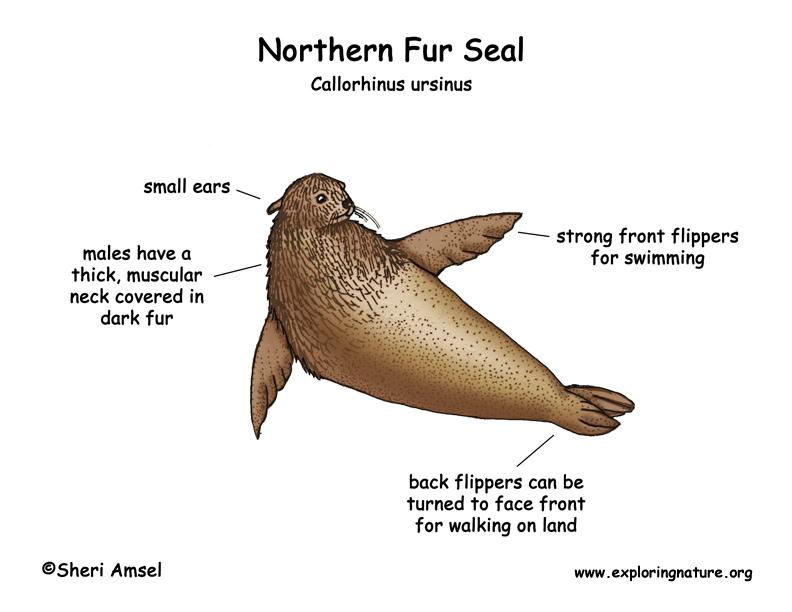

They are found all over the northern Pacific Ocean from the Bering Sea, north of the Aleutian Islands, in Alaska down to southern California and across to central Japan.
They live in the northern waters of the Pacific Ocean and breed on the rocky coasts.
Males can weigh up to 600 pounds with thick, muscular necks covered in dark fur. Females only weigh about 120 pounds. They have small ears (unlike true seals, who have no ears you can see). Their back flippers can be turned to face front for walking on land. They have strong front flippers for swimming (true seals use their back flippers for swimming).
Males are called “bulls” and fight for breeding territory. They have sharp canine teeth and bite big gashes in each other’s necks. Only the biggest, strongest males get to breed with females. This is tiring for the lead males, sometimes called the “beachmaster.” They have no time to eat during the whole breeding season. They will lose 1/5 of his whole body weight before it is over. Males live near their territories all winter. Females will travel south (migrate) and come back to have their young the next summer.
They eat fish and squid.
They are hunted by killer whales, great white sharks and larger sea lions.
Females come to the beaches to have their young. Then they mate with the winning male. They are pregnant for almost 12 months (gestation). They have one baby, within 2 days of coming to the beach.
They can live for 25 years. They are listed as a "vulnerable" species.
Kingdom: Animalia
Phylum: Chordata
Subphylum: Vertebrata
Class: Mammalia
Order: Carnivora
Suborder: Caniformia
Family: Otariidae
Genus: Callorhinus
Species: Callorhinus ursinus
When you research information you must cite the reference. Citing for websites is different from citing from books, magazines and periodicals. The style of citing shown here is from the MLA Style Citations (Modern Language Association).
When citing a WEBSITE the general format is as follows.
Author Last Name, First Name(s). "Title: Subtitle of Part of Web Page, if appropriate." Title: Subtitle: Section of Page if appropriate. Sponsoring/Publishing Agency, If Given. Additional significant descriptive information. Date of Electronic Publication or other Date, such as Last Updated. Day Month Year of access < URL >.
Amsel, Sheri. "Seal (Northern Fur)" Exploring Nature Educational Resource ©2005-2024. December 13, 2024
< http://www.exploringnature.org/db/view/Seal-Northern-Fur >

